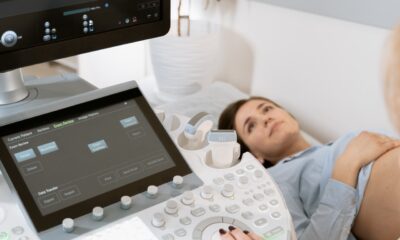Health & Fitness
Top Healthcare Technology Trends 2021

Various medical equipment and medical supplies are adapting technologies at a safe pace. For instance, hand sanitizer bottles are replaced by hand sanitizing dispensers, the most used COVID equipment for public places. This high-tech advancement in the medical industry has saved millions of lives and is strengthening billions of us. Healthcare centers have adopted EHR (Electronic Health Record) and EMR (Electronic Medical Reports). They are satisfying patients through their accuracy and comfort of receiving reports on the phone itself. But there are more healthcare technology trends to watch out for in 2021. Here are some of them:
1. Smart Inhaler
Inhalers are the main asthma treatment option. But, research shows that 90% of patients don’t use the inhalers correctly. This can give birth to many uncontrollable asthma symptoms. Thus, a smart inhaler strikes as a solution here.
A smart inhaler enabled by Bluetooth helps to manage asthma patients’ conditions. A small tracker attached to the inhaler records the date and time of each dosage and also saves a record if one used it correctly or not. This data is then sent to the patient’s smartphone to track their condition and also control it. Clinical trials say that smart inhalers lead to less drug use and eventually more days without drug use.
2. 3-D printing in High Tech Medical
As we are aware that 3D printers are one of the market’s hottest innovations and how! 3D-printed prostheses are entirely custom-made. These have become prevalent due to their digital ability to fit individual dimensions up to millimeters. Such printers are also helpful for producing implants and joints used during surgery.
These printers let you build products that are both water-soluble and long-lasting. For instance, 3D printing is ideal to “print” tablets that contain multiple drugs. It helps patients to coordinate, schedule, and track various medications.
3. Artificial Organs
Bioprinting represents a revolutionary medical technology for advancing in 3D printing. Replicating skin cells for burn victims was initially tough, but through artificial organ technology, the medical industry slowly but surely formed a way to more appealing possibilities. The good news is that scientists already have developed blood vessels, synthetic ovaries, and even the pancreas. The artificial organs develop inside the patient’s body to replace the faulty original organ. Imagine having artificial organs that the body’s immune system will accept and function as the original organ. Doesn’t that sound revolutionary? It can save all those patients who are dependent on life-saving transplants.
4. Mobile Health
Mobile health technology provides access to personalized information by using digital solutions and connected devices. This technology allows patients to view their health charts, prescriptions, reports, scheduled appointments, etc., from their mobile. It provides many features that make healthcare delivery easily accessible like:
- Geographical maps
- Real-time data streams
- Point-of-need diagnostic devices
- Smartphone-linked wearable sensors
- Medical-grade imaging
5. Health Wearable
Since its introduction in 2000, Bluetooth technology has become the most popular technology for connections. The most basic examples are wireless headphones and wearables. Today, mobile phones can track steps, heartbeats, physical fitness, sleep patterns, and more. The approach to wearable devices is directly associated with a massive increase in chronic diseases like diabetes. Wearables help these patients to track and enhance their physical health.
6. Virtual Reality
Virtual reality has been popular now for a long while. This development has also been helpful for teaching medical students, giving them an instance of real life. Through rehearsing the process and visually understanding the anatomy of the human body, advanced techniques help you gain the knowledge you need. VR devices serve as a reliable aid to diagnose patients, prepare for the necessary procedures, and plan treatments for them. It is highly effective in inpatient rehabilitation and recovery.
7. Telehealth
Telehealth describes an evolving technology that allows patients to receive medical care through digital devices. They don’t need to wait for a doctor’s appointment. For example, providing a highly customized mobile app that helps patients to speak to physicians or other health care professionals remotely. Furthermore, this application can also offer immediate diagnosis and medical advice.
Telehealth also provides patients with different healthcare access points by leveraging over-subscription services. Through this, one can use the telehealth features whenever and wherever they want. This is mainly helpful for patients with chronic illnesses, as it offers efficient, reliable, and cost-effective treatment for them remotely.
Both pharmaceutical and medical technologies are developing with massive possibilities of facilitating medical treatments. The only goal is to provide a longer life to people and finding a cure for those fewer incurable diseases left. To fulfill this goal, advancements in medical equipment and medical supplies are necessary.











